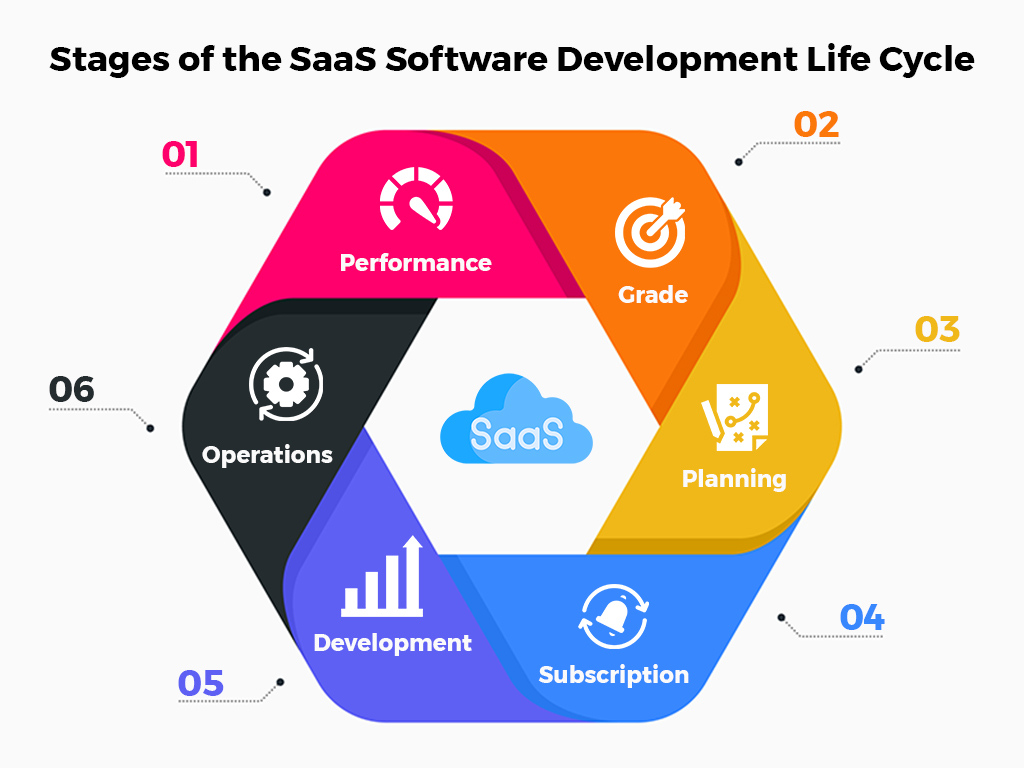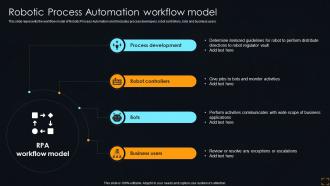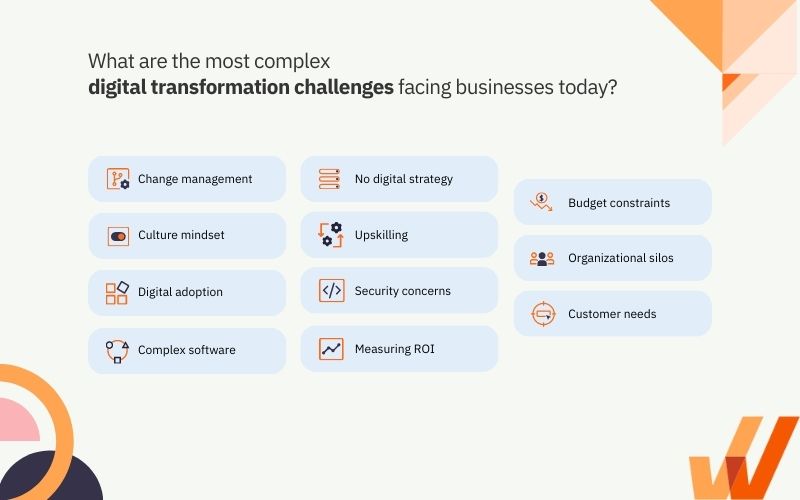Why Digital Transformation is Crucial for SaaS Startups
In today’s fast-paced digital landscape, SaaS startups must undergo a digital transformation to remain competitive and achieve long-term success. Digital transformation is not just a buzzword; it’s a strategic imperative that enables SaaS startups to innovate, adapt, and thrive in a rapidly changing market. By embracing digital transformation, SaaS startups can improve customer experience, increase efficiency, and drive business growth.
One of the primary reasons digital transformation is crucial for SaaS startups is the need to stay competitive. With the rise of digital technologies, customers expect seamless, intuitive, and personalized experiences. SaaS startups that fail to deliver on these expectations risk losing customers to more agile and innovative competitors. By undergoing a digital transformation, SaaS startups can leverage cutting-edge technologies to create exceptional customer experiences, drive engagement, and build loyalty.
Digital transformation also enables SaaS startups to increase efficiency and reduce costs. By automating manual processes, streamlining operations, and leveraging cloud computing, SaaS startups can optimize resources, improve productivity, and enhance overall performance. This, in turn, enables SaaS startups to allocate more resources to innovation, product development, and customer acquisition, driving business growth and scalability.
Furthermore, digital transformation is essential for SaaS startups to scale and grow. As SaaS startups expand, they must be able to adapt quickly to changing market conditions, customer needs, and technological advancements. Digital transformation enables SaaS startups to develop a flexible and agile infrastructure, allowing them to pivot quickly, innovate rapidly, and respond to emerging opportunities and challenges.
By undergoing a digital transformation, SaaS startups can unlock new revenue streams, improve customer satisfaction, and drive business growth. In the next section, we will explore how to assess your SaaS startup’s digital maturity and identify areas for improvement.
How to Assess Your SaaS Startup’s Digital Maturity
Assessing your SaaS startup’s digital maturity is a crucial step in undergoing a successful digital transformation. Digital maturity refers to the extent to which a company has adopted and integrated digital technologies into its business operations. By evaluating your SaaS startup’s digital maturity, you can identify areas for improvement, prioritize investments, and develop a roadmap for digital transformation.
To assess your SaaS startup’s digital maturity, consider the following framework:
1. Technology Infrastructure: Evaluate your current technology infrastructure, including hardware, software, and network infrastructure. Consider the scalability, flexibility, and security of your infrastructure, as well as its ability to support emerging technologies such as cloud computing, artificial intelligence, and the Internet of Things (IoT).
2. Data Management: Assess your data management capabilities, including data collection, storage, analysis, and visualization. Consider the quality, accuracy, and completeness of your data, as well as your ability to extract insights and make data-driven decisions.
3. Customer Engagement Strategies: Evaluate your customer engagement strategies, including customer acquisition, retention, and support. Consider the effectiveness of your marketing campaigns, the quality of your customer support, and the overall customer experience.
By assessing your SaaS startup’s digital maturity across these three dimensions, you can identify areas for improvement and develop a roadmap for digital transformation. For example, you may need to invest in cloud computing infrastructure to support scalability and flexibility, or develop a data analytics platform to inform product development and marketing strategies.
Additionally, consider the following tips to identify areas for improvement:
* Conduct a thorough analysis of your current technology infrastructure and identify areas for upgrade or replacement.
* Develop a data management strategy that includes data collection, storage, analysis, and visualization.
* Evaluate your customer engagement strategies and identify opportunities to improve the customer experience.
By following this framework and considering these tips, you can assess your SaaS startup’s digital maturity and develop a roadmap for digital transformation that drives business growth and success.
Leveraging Cloud Computing for Scalability and Flexibility
Cloud computing is a critical component of digital transformation for SaaS startups. By leveraging cloud computing, SaaS startups can achieve scalability, flexibility, and cost savings, enabling them to compete more effectively in the market. Cloud computing provides on-demand access to a shared pool of computing resources, such as servers, storage, and applications, over the internet.
The benefits of cloud computing for SaaS startups are numerous. Firstly, cloud computing provides scalability, allowing SaaS startups to quickly scale up or down to meet changing business needs. This is particularly important for SaaS startups that experience rapid growth or seasonal fluctuations in demand. Secondly, cloud computing provides flexibility, enabling SaaS startups to deploy applications and services quickly and easily, without the need for expensive hardware or software investments.
Popular cloud computing platforms for SaaS startups include Amazon Web Services (AWS) and Microsoft Azure. AWS provides a comprehensive set of cloud computing services, including compute, storage, and database services, as well as analytics, machine learning, and security services. Microsoft Azure provides a similar set of services, including compute, storage, and database services, as well as AI, machine learning, and IoT services.
When selecting a cloud computing platform, SaaS startups should consider several factors, including scalability, security, and cost. Scalability is critical, as SaaS startups need to be able to quickly scale up or down to meet changing business needs. Security is also essential, as SaaS startups need to protect sensitive customer data and ensure compliance with regulatory requirements. Cost is also an important consideration, as SaaS startups need to balance the need for scalability and security with the need to control costs.
By leveraging cloud computing, SaaS startups can achieve significant benefits, including increased scalability, flexibility, and cost savings. Cloud computing provides on-demand access to a shared pool of computing resources, enabling SaaS startups to quickly deploy applications and services, without the need for expensive hardware or software investments. By selecting the right cloud computing platform, SaaS startups can ensure that they have the scalability, security, and cost-effectiveness they need to compete in the market.
Unlocking the Power of Data-Driven Decision Making
Data-driven decision making is a critical component of digital transformation for SaaS startups. By leveraging data analytics, SaaS startups can inform product development, marketing strategies, and customer support, driving business growth and success. Data-driven decision making enables SaaS startups to make informed decisions, reduce uncertainty, and optimize resources.
The importance of data-driven decision making for SaaS startups cannot be overstated. By analyzing customer data, SaaS startups can gain valuable insights into customer behavior, preferences, and needs. This information can be used to inform product development, ensuring that products meet customer needs and expectations. Data analytics can also be used to optimize marketing strategies, improving customer acquisition and retention rates.
Popular data analytics tools for SaaS startups include Google Analytics and Mixpanel. Google Analytics provides a comprehensive set of analytics tools, including website analytics, conversion tracking, and audience insights. Mixpanel provides a range of analytics tools, including product analytics, user analytics, and retention analytics.
When implementing data-driven decision making, SaaS startups should consider several factors, including data quality, data integration, and data visualization. Data quality is critical, as poor data quality can lead to inaccurate insights and decisions. Data integration is also essential, as SaaS startups need to integrate data from multiple sources, including customer data, product data, and marketing data. Data visualization is also important, as it enables SaaS startups to communicate complex data insights to stakeholders.
By leveraging data-driven decision making, SaaS startups can drive business growth and success. Data analytics provides valuable insights into customer behavior, preferences, and needs, enabling SaaS startups to inform product development, marketing strategies, and customer support. By implementing data-driven decision making, SaaS startups can reduce uncertainty, optimize resources, and drive business growth.
Some best practices for implementing data-driven decision making include:
* Establish a data-driven culture, where data is used to inform decisions
* Invest in data analytics tools, such as Google Analytics and Mixpanel
* Integrate data from multiple sources, including customer data, product data, and marketing data
* Use data visualization to communicate complex data insights to stakeholders
Streamlining Operations with Automation and AI
Automation and artificial intelligence (AI) are powerful tools for streamlining operations in SaaS startups. By automating repetitive tasks, improving customer support, and enhancing product development, SaaS startups can increase efficiency, reduce costs, and improve customer satisfaction. Automation and AI can help SaaS startups to scale and grow, while also improving the overall customer experience.
One of the key benefits of automation and AI is the ability to automate repetitive tasks. This can include tasks such as data entry, bookkeeping, and customer support. By automating these tasks, SaaS startups can free up staff to focus on more strategic and creative work. Automation and AI can also help to improve the accuracy and speed of these tasks, reducing the risk of human error and improving overall efficiency.
Another key benefit of automation and AI is the ability to improve customer support. Chatbots and virtual assistants can be used to provide 24/7 customer support, answering common questions and helping customers to resolve issues quickly and easily. This can help to improve customer satisfaction and reduce the workload of customer support teams.
Automation and AI can also be used to enhance product development. Machine learning algorithms can be used to analyze customer data and identify patterns and trends, helping to inform product development and improve the overall customer experience. Automation and AI can also be used to improve the testing and quality assurance process, reducing the risk of bugs and errors and improving overall product quality.
Some popular tools for automation and AI in SaaS startups include Zapier and Salesforce. Zapier is a workflow automation tool that allows users to automate tasks and workflows across multiple apps and services. Salesforce is a customer relationship management (CRM) platform that includes a range of automation and AI tools, including chatbots and virtual assistants.
When implementing automation and AI, SaaS startups should consider several factors, including the type of tasks to automate, the level of automation to implement, and the potential impact on staff and customers. It’s also important to consider the potential risks and challenges of automation and AI, including the risk of job displacement and the need for ongoing maintenance and support.
Some best practices for implementing automation and AI include:
* Start small, automating a few key tasks and workflows before scaling up
* Focus on tasks that are repetitive, time-consuming, or prone to error
* Consider the potential impact on staff and customers, and plan for ongoing maintenance and support
* Monitor and evaluate the effectiveness of automation and AI, making adjustments as needed
Creating a
Measuring Success: Key Performance Indicators (KPIs) for Digital Transformation
Measuring success in digital transformation is crucial for SaaS startups to understand the effectiveness of their digital transformation efforts. Key performance indicators (KPIs) are metrics that help SaaS startups measure progress towards their digital transformation goals. By tracking KPIs, SaaS startups can identify areas for improvement, optimize their digital transformation strategy, and drive business growth and success.
Some common KPIs for digital transformation include:
* Customer acquisition costs (CAC): The cost of acquiring a new customer, including marketing and sales expenses.
* Retention rates: The percentage of customers retained over a certain period of time.
* Revenue growth: The increase in revenue over a certain period of time.
* Customer lifetime value (CLV): The total value of a customer over their lifetime.
* Return on investment (ROI): The return on investment for digital transformation initiatives.
By tracking these KPIs, SaaS startups can gain insights into the effectiveness of their digital transformation efforts and make data-driven decisions to optimize their strategy.
For example, if a SaaS startup is tracking CAC and retention rates, they may discover that their customer acquisition costs are high and their retention rates are low. This could indicate that their marketing and sales strategies need to be optimized to reduce CAC and improve retention rates.
Similarly, if a SaaS startup is tracking revenue growth and CLV, they may discover that their revenue growth is slow and their CLV is low. This could indicate that their product or service needs to be optimized to increase revenue growth and CLV.
By using KPIs to measure success in digital transformation, SaaS startups can:
* Identify areas for improvement
* Optimize their digital transformation strategy
* Drive business growth and success
* Make data-driven decisions
Some popular tools for tracking KPIs include:
* Google Analytics: A web analytics tool that provides insights into website traffic, engagement, and conversion rates.
* Mixpanel: A product analytics tool that provides insights into user behavior and retention rates.
* Salesforce: A customer relationship management (CRM) tool that provides insights into customer interactions and sales performance.
By using these tools and tracking KPIs, SaaS startups can measure success in digital transformation and drive business growth and success.
Overcoming Common Challenges in Digital Transformation
Digital transformation can be a complex and challenging process for SaaS startups. Despite the many benefits of digital transformation, SaaS startups often face common challenges that can hinder their progress. In this section, we will discuss some of the most common challenges SaaS startups face during digital transformation and offer advice on how to overcome them.
One of the most common challenges SaaS startups face during digital transformation is resistance to change. Many employees may be hesitant to adopt new technologies and processes, especially if they are comfortable with the existing way of doing things. To overcome this challenge, SaaS startups should communicate the benefits of digital transformation clearly and transparently, and provide training and support to help employees adapt to the changes.
Another common challenge SaaS startups face during digital transformation is limited resources. Digital transformation often requires significant investments in new technologies, talent, and processes. To overcome this challenge, SaaS startups should prioritize their investments and focus on the most critical areas of their business. They should also consider partnering with other companies or vendors to access new technologies and expertise.
Integrating new technologies is another common challenge SaaS startups face during digital transformation. New technologies can be complex and difficult to integrate with existing systems and processes. To overcome this challenge, SaaS startups should develop a clear integration strategy and plan, and work closely with their technology vendors to ensure a smooth integration process.
Finally, SaaS startups may face challenges in measuring the success of their digital transformation efforts. To overcome this challenge, SaaS startups should establish clear key performance indicators (KPIs) and metrics to measure the success of their digital transformation efforts. They should also regularly review and assess their progress, and make adjustments as needed.
Some popular strategies for overcoming common challenges in digital transformation include:
* Communicating the benefits of digital transformation clearly and transparently
* Providing training and support to help employees adapt to the changes
* Prioritizing investments and focusing on the most critical areas of the business
* Partnering with other companies or vendors to access new technologies and expertise
* Developing a clear integration strategy and plan
* Establishing clear KPIs and metrics to measure the success of digital transformation efforts
By understanding the common challenges SaaS startups face during digital transformation and developing strategies to overcome them, SaaS startups can ensure a successful digital transformation and achieve their business goals.







